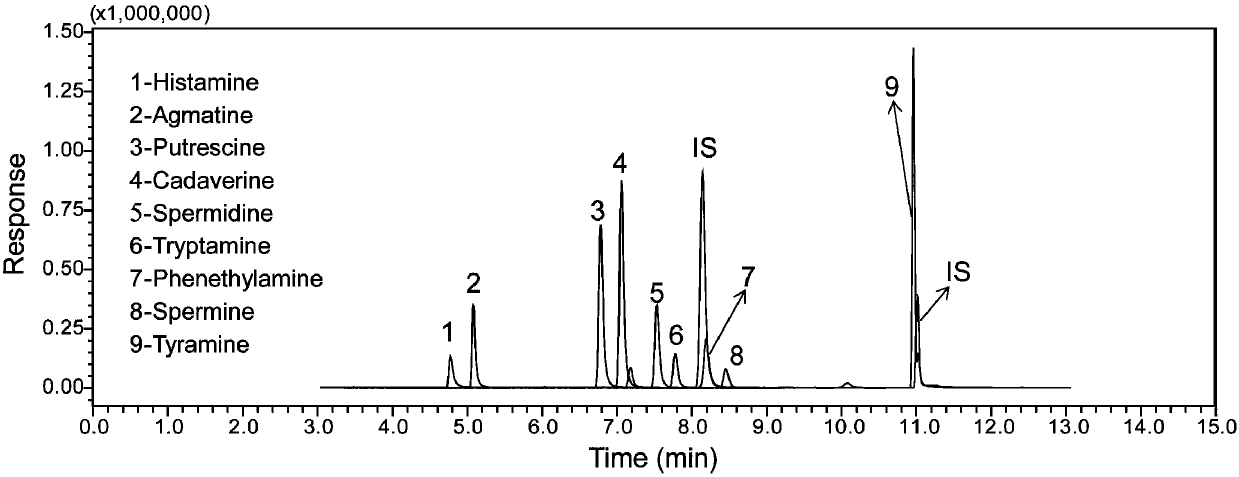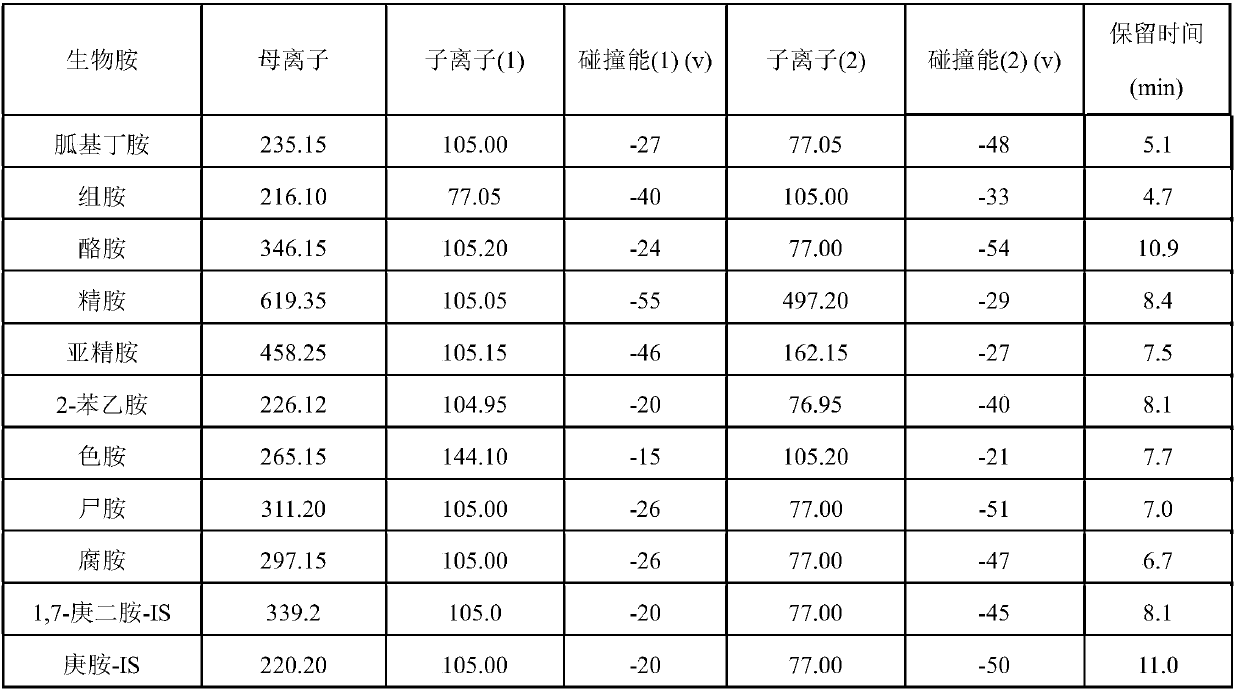Rapid analysis method of biogenic amine in fish
An analytical method and rapid analysis technology, applied in the field of analytical chemistry and food safety, to achieve the effects of stable derivatives, wide linear range and high sensitivity
- Summary
- Abstract
- Description
- Claims
- Application Information
AI Technical Summary
Problems solved by technology
Method used
Image
Examples
Embodiment 1
[0020] Evaluation of analysis methods for biogenic amines in fish tissues based on 5-sulfosalicylic acid-based bead grinding extraction, benzoyl chloride derivatization, and liquid chromatography-triple quadrupole mass spectrometry detection
[0021] Investigation of linearity, detection limit and quantification limit. Concentrations of single-labeled mother liquors of agmatine, histamine, tyramine, spermine, spermidine, 2-phenethylamine, tryptamine, cadaverine, putrescine, 1-heptylamine and 1,7-heptanediamine Both are 10mg / mL, 1-heptylamine and 1,7-heptanediamine are internal standards, and the remaining 9 amines are biogenic amines to be analyzed. Except tryptamine, tyramine and 2-phenylethylamine, ethanol is used as the solvent, and acetonitrile solution with a volume concentration of 20% is selected as the solvent for other substances. The concentration of the mixed-standard mother liquor of 9 kinds of biogenic amines is 1 mg / mL (the quality of each bio-amine is the same): 1...
Embodiment 2
[0031] Analysis of biogenic amines in four types of fish from different sources
[0032] (1) Sample pretreatment: The fish tissues of the mackerel, yellow croaker, hairtail, and pomfret purchased from the two retail markets are respectively skinned, deboned, and visceral. The fish tissues are coarsely homogenized with a cooking machine (rotating speed is 12000 rpm / The homogenization time is 1-5min). After coarse homogenization, weigh 20mg±0.5mg of fish tissues and place them in a 2mL ep tube, add zirconia beads in sequence, 300μL of 5-sulfosalicylic acid solution with a concentration of 5mg / mL, and 100μL of each with a concentration of 4.5μg / mL of heptamine and 1,7-heptanediamine internal standard solution, 100μL of acetonitrile solution with a volume concentration of 20%; use a hybrid grinder to grind and extract for 1 min under 20Hz conditions, repeat twice; grind and extract the sample immediately Put it in a centrifuge and centrifuge for 10 min at 4°C and 14000 rpm; take 1...
PUM
| Property | Measurement | Unit |
|---|---|---|
| Elution gradient | aaaaa | aaaaa |
| Elution gradient | aaaaa | aaaaa |
Abstract
Description
Claims
Application Information
 Login to View More
Login to View More - R&D
- Intellectual Property
- Life Sciences
- Materials
- Tech Scout
- Unparalleled Data Quality
- Higher Quality Content
- 60% Fewer Hallucinations
Browse by: Latest US Patents, China's latest patents, Technical Efficacy Thesaurus, Application Domain, Technology Topic, Popular Technical Reports.
© 2025 PatSnap. All rights reserved.Legal|Privacy policy|Modern Slavery Act Transparency Statement|Sitemap|About US| Contact US: help@patsnap.com



